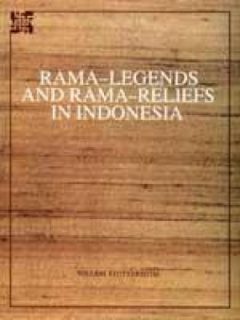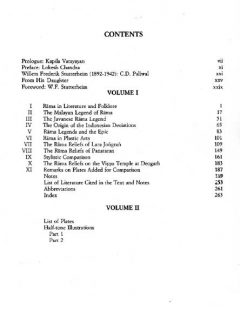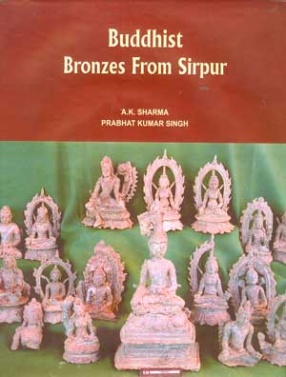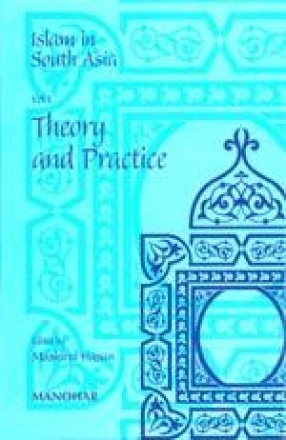The work first published in 1925 in the series Der Indische Kulturkreis in Einzeldarstellungen has been considered a classic, but has not been alas easily accessible to the English reading public. Also for long, the work has been out of print. With the publication of the English translation many new vistas of exploration will immediately open up. It is remarkable that despite the paucity of published material, the comparative absence of structural linguistic models for the study of languages and theoretical paradigms, the late Professor Stutterheim employs the tools of structural linguistic analysis, comparative literature, and historical reconstruction. This is a far more challenging task than descriptive archaeology and stylistic analysis. Fundamental to this is his ability to correlate and revaluate the relationship between the written texts and oral transmission. While all this is very familiar to contemporary scholarship, a reading of this monograph convinces one that Professor Stutterheim anticipated modern scholarship by many decades. His concern was not restricted to the archaeological features of this group of temples but went much further into interpretation and identification of the historical processes of acculturization, diffusion and autochthonous tendencies. Along with the late Professor D.C. Sen, he may be considered the first scholar to draw attention to the role of the oral enunciation of the Rama Legends in different parts of Asia. In this monograph he forcefully argues that Valmiki’s Ramayana was not the basis of the Indonesian versions and disagrees with the hypothesis that Kamban provided a model or even that Hanuman-nataka was the original source. He comes to the interesting conclusion that perhaps Gujarat was the source. Much has been written on the subject during the past few decades, however, Professor Stutterheim’s argument remains fresh. Perhaps scholars will want to re-explore the sources of the Gujarati version of the Ramayana as also the Panji stories of Java. The monograph will also stimulate discussion of a most contemporary concern, i.e., the relationship of the text and the image: the adherence, the interpretations and the deviations. Of late, many art historians have been concerned in their respective ways to analyse the interface of text and image. The monograph is of immediate contemporary relevance as theoretical model for modern scholarship.
Rama-Legends and Rama-Reliefs in Indonesia
Add to favorites
Contents
$34.20
$38.00
In stock
Free & Quick Delivery Worldwide
All orders amounting to US$ 50 or more qualify for Free Delivery Worldwide. For orders less than US$ 50, we offer Standard Delivery at $14 per book.
ABOUT THE AUTHOR Willem Stutterheim
Willem Frederik Stutterheim (1892-1942) will long remain as the great towering figure of the early 20th century, who in his brief life span displayed a perception into the Indonesian monuments which has been hard to excel. Although coming in the wake of the great French and Dutch scholars, he not only held his own but argued and debated convincingly with his peers such as the late Prof. Brandes, Krom, Bosch and others. Director of Eastern Classical Studies in Indonesia at Surakarta in Central Java for about a decade, from 1936 he was the Chief of the Archaeological Service of the Netherlands Indies. He clearly pointed out deviations from the classical norms and identified local elements depicted on the Siva temple of the Lara Jongran complex at Prambanan. In fact, this subject is dealt with in the first part. In the second part he analyses the Rama reliefs of Candi Panataran, which, though much younger, is an important monument in East Java. His studies on other monument are also noteworthy as they throw new light, for instance, on Borobudur. His work is characterized by an elucidation of the deeper meanings of monuments, as on the Jala Tunda. His Indian Influences on Old-Balinese Art appeared from London in 1935. His studies on the kraton palaces of the Majapahit based on Prapanca's description are compared with the remains of royal palaces in Bali and elsewhere. He initiated investigations into several monuments like Gunun Vukir, Ratu Boko and Candi Javi.
reviews
0 in total
Review by Anonymous
Be the first to review “Rama-Legends and Rama-Reliefs in Indonesia” Cancel reply
You must be logged in to post a review.
Bibliographic information
Title
Rama-Legends and Rama-Reliefs in Indonesia
Author
Edition
1st. ed.
Publisher
ISBN
8170172519
Length
xxxii+298p., Figures; 230 B/w Plates; Tables; Notes; Index; 29cm.
Subjects
similar bookssee more
The Golden Books of Upanishads: Humanity’s Earliest Philosophical Compositions
The Golden Books series of ...
$22.50
$25.00







There are no reviews yet.